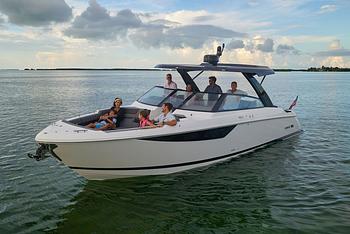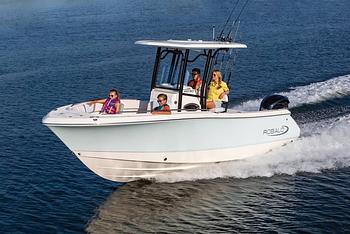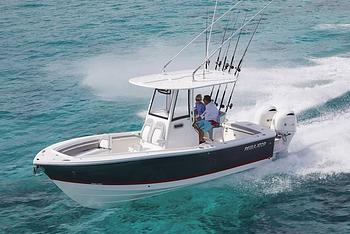Imagine if you could employ an underwater sonogram of sorts that allowed you to see fish from hundreds of feet away, differentiate between species, and even watch them in real time as they reacted to your lure. Well you can, if you have real-time imaging sonar aboard. In fact, in some venues this angling armament has become so widespread and proved so effective that there’s tremendous controversy surrounding its use in fishing tournaments.
In some other angling communities, however, its use is still virtually unheard-of. But that’s changing, as new developments and products hitting the market in 2024 are altering this forward-looking game. Which of these systems are the best? What’s new and different? Do these systems live up to all the hype? And, should everyone out there outfit their fishing boats with real-time imaging?
Before we dig into the answers to these questions, it’s important to touch on terminology because it can be a bit confusing for people unfamiliar with these systems. Each manufacturer has its own branding, and you’ll see several different names for these systems pop up including: real-time imaging, forward-scanning sonar, forward-facing sonar, and live-scanning sonar. However, it’s important to note that there are pre-existing products marketed using terms like “forward looking sonar.” These are very different systems and shouldn’t be confused with real-time imagers. They consist of traditional sonar with a transducer pointing forward rather than down, and most are intended for grounding avoidance; they merely show the bottom and depth in front of the boat as opposed to providing a view of the fish in front of it in real time.
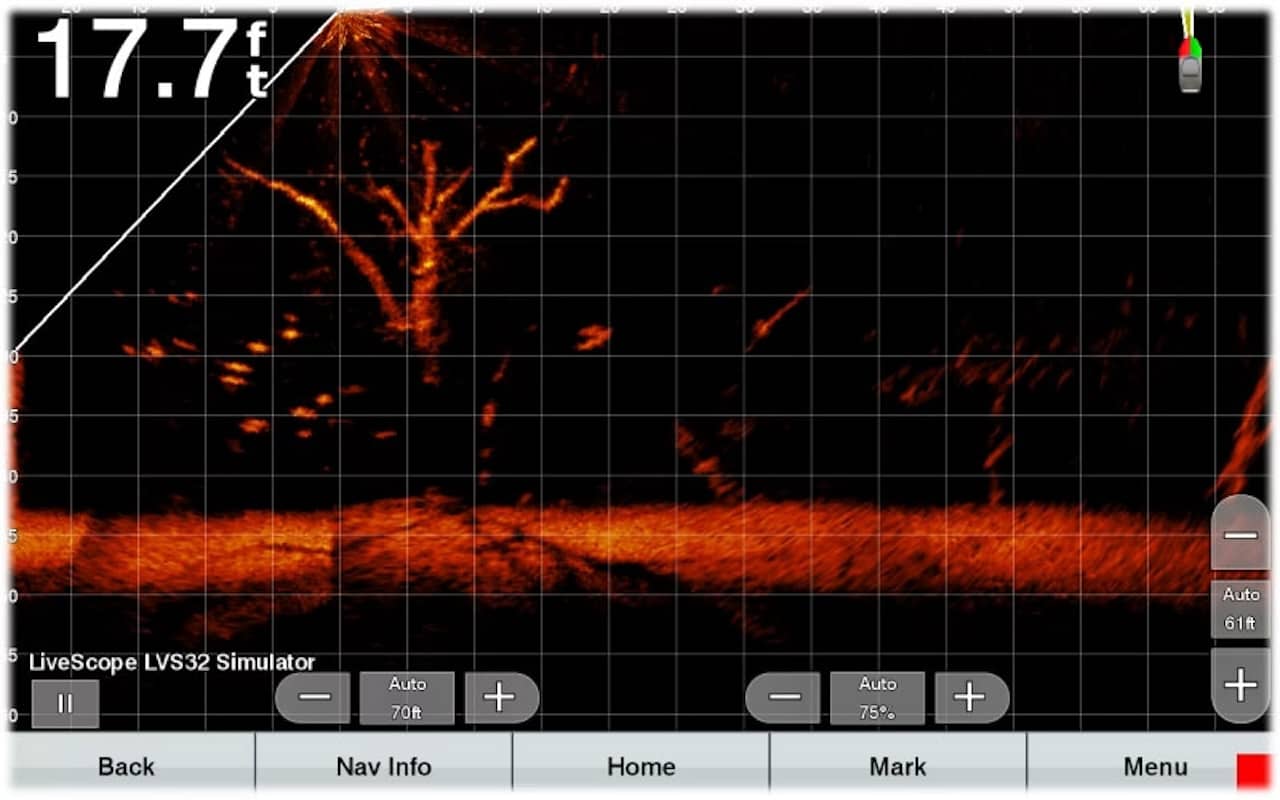
These systems let you watch the fish in real-time. Garmin photo.
What is Real-Time Imaging?
Real-time imaging systems are the latest type of fish finder developed, and they allow you to aim a transducer at a specific piece of structure or hotspot and literally watch fish swimming around next to it. Garmin was the first to market with one of these systems, called Panoptix, which utilizes multi-frequency bursts of sonar waves via multiple transducers encased in the same housing, each at a different angle, arranged in a fan-shaped array. First introduced in 2015, the resulting images had a sonogram-like look to them and were fuzzy and low resolution, but it was possible to watch a fish swim past a tree or chase after a lure. Enhanced computing power and the evolution of attitude heading reference systems that could adjust the picture to account for the motion of the boat vastly improved the results, and the system was continually upgraded after its introduction. Over the next few years, several of the major marine electronics manufacturers came out with competing versions.
Today, all of these systems have improved to the point that it’s possible to look at your fishfinder screen and see the size and shape of individual fish. In many cases, fin and tail shape along with size make it possible to differentiate between species. You can watch your lures moving through the water, and see when fish turn and follow them, attack them, or ignore them.
Despite this amazing capability, these systems have a number of limitations. Their high-frequency waves don’t travel very far so range is quite limited. They use a transducer that needs to be aimed, so it needs to be mounted on the shaft of an articulating bow-mount trolling motor or an accessory shaft that’s lowered into the water. Most also require an additional black-box unit (the brains of the system) mounted between the transducer and the MFD. Cost is of course a barrier, and the different systems don’t like to play nice with one another—you can’t add a Garmin imager to a Lowrance system, and vice versa.
Garmin
The original Panoptix evolved to become Panoptix LiveScope in 2018, with enhanced clarity and detail and a range out to 200 feet in freshwater environments. Today their Live Sonar products include LiveScope ($1,999), LiveScope Plus ($1,199), LiveScope XR ($2,499), and a slew of different transducers. LiveScope XR was the first attempt to target the saltwater market, boasting an enhanced range out to 350 feet. Their latest introduction for 2024 is the Panoptix PS70, a stainless-steel through-hull transducer intended to bring LiveScope into the world of offshore fishing.
Due to range limitations and the need to mount a maneuverable transducer, thus far these systems have failed to make significant inroads in the offshore world. The PS70 takes a different tack, blasting out 800 watts of power at 190 to 210 kHz in a fixed downward-looking multi-beam phased array that overcomes previous range challenges (which are more significant in saltwater than in freshwater), to provide views to 1,000 feet. It also incorporates traditional sonar capability, eliminating the need for multiple through-hull transducers in a single boat. It’s compatible with Garmin GPSMAP MFDs. However, having just hit the market, the angling community hasn’t yet had time on the water to draw solid conclusions about the system’s utility while fishing offshore. Additionally, note that pricing for the transducer is rather spectacular at $4,799.99.
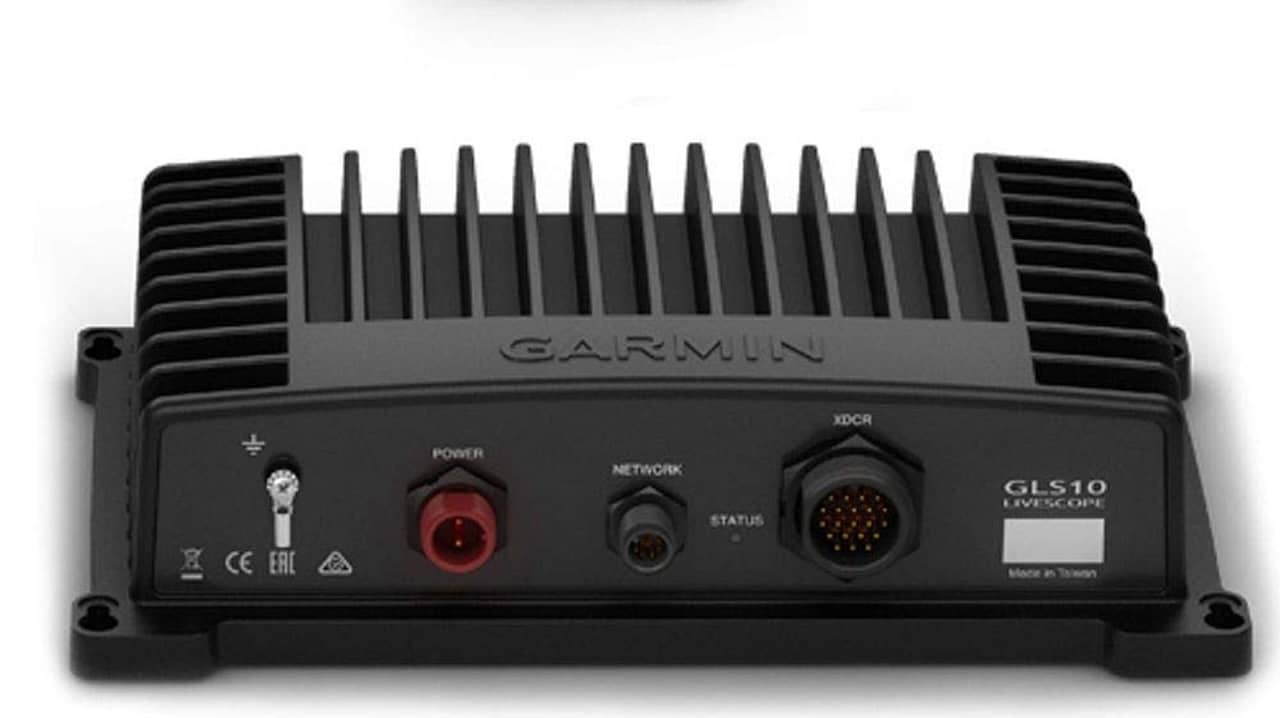
Most systems need the addition of a black box. Garmin photo.
Humminbird MEGA Live Imaging
Humminbird joined the real-time imaging game in 2021 with the introduction of its MEGA Live Imaging system. Compatible with their Apex, Solix, and some Helix MFDs, the system doesn’t require any additional black box as long as the MFD has up-to-date software. The transducer was designed to pair with Minn Kota Ultrex trolling motors (Humminbird’s parent company is Johnson Outdoors, which also owns Minn Kota), and they quickly upped the imaging ante by introducing Target Lock, placing the transducer on an additional accessory pole with the ability to lock in the sonar on a specific object or piece of structure, eliminating the need to manipulate the trolling motor to keep the transducer beam on target.
Previously, a huge drawback of pointing the motor to aim the beam was that it meant you couldn’t use Spot-Lock GPS virtual anchoring to hold the boat in place and aim the transducer at the fish at the same time. Humminbird remains the only system to offer this ability, although separate accessory poles (manipulated manually to aim the beam without having to alter the trolling motor’s orientation) are employed by some anglers. Pricing for Humminbird systems start at $999 but varies depending on the mounting application, which can range from $99 for a shaft mount to $2,499 for Target Lock.
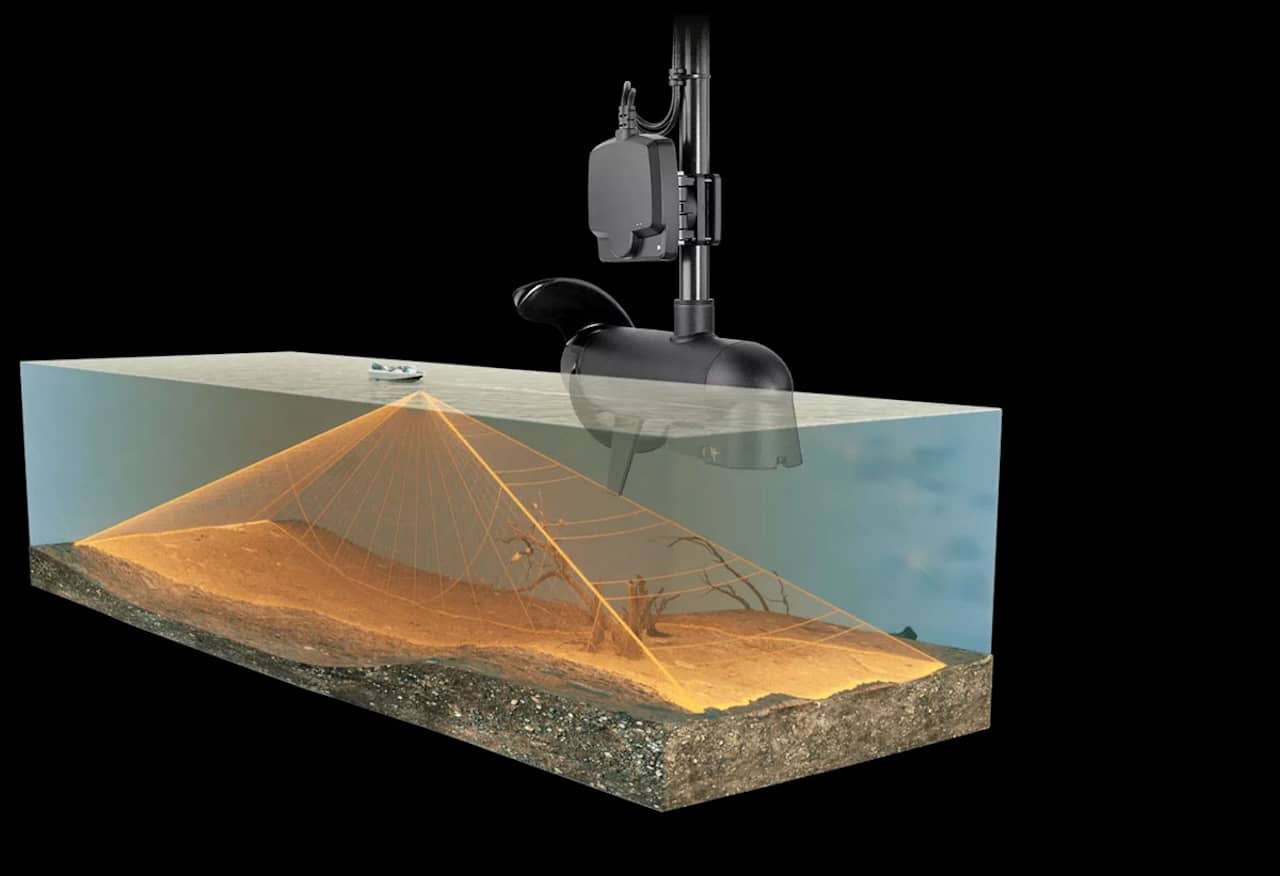
Humminbird-live-imaging. Humminbird-photo.
Lowrance ActiveTarget Imaging
The Lowrance ActiveTarget system was introduced in 2020 and offers compatibility through the HDS Pro, HDS LIVE, HDS Carbon, and Elite FS series MFDs. In 2022, the system was upgraded to ActiveTarget 2, with enhanced resolution and detail levels. At the time of this publication, the module and transducer bundle lists at $1,649. Lowrance also offers a dual transducer system with ActiveTarget 2, with a “Scout Wide” view providing a wider field of detection intended for finding and tracking bait and schools of fish that may not be oriented to structure. This requires the extra transducer ($1,099) and an additional twin-transducer bracket mounted to the trolling motor shaft ($79).
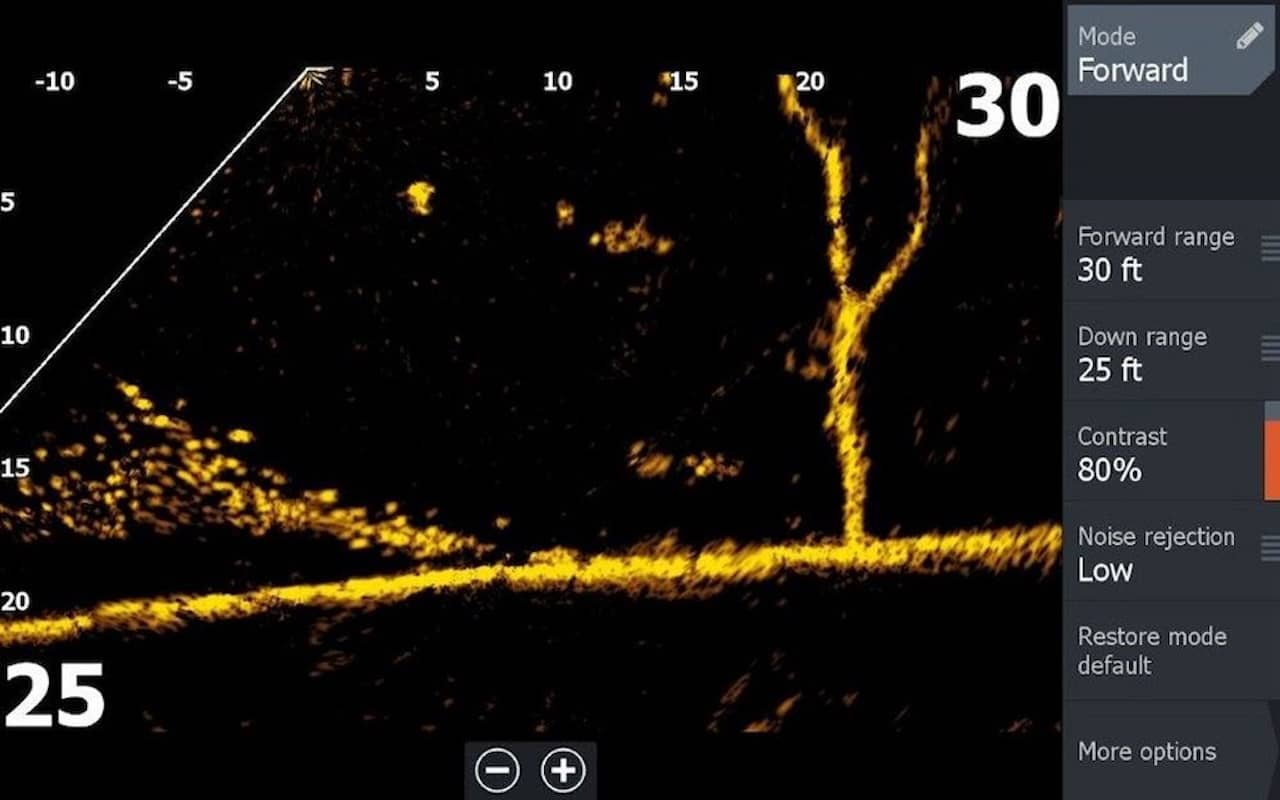
Lowrance Live Scope. Lowrance photo.
Fishing Lures for Real-Time Imagers
As these systems have become more and more popular, an interesting trend has popped up in the tackle manufacturing industry; companies are designing fishing lures specifically for use with real-time imaging. Many lures are as easy to spot on the imager screen as fish are (and targeting gel can be added to those that aren’t). However, since most lures are designed to be cast out and retrieved directly back to the boat, after watching a lure pass by a fish without generating a reaction anglers have to spend time reeling in, resetting, and recasting.
A new generation of lures can be paused or worked differently to reverse direction, thus allowing the angler to change up his or her retrieve style or cadence and present the lure to a fish multiple times during the same cast. These lures may be weighted to sink backwards, designed to dart side to side rather than forward when jerked, or can be jiggled to impart a lifelike motion without traveling outside of the strike zone. This is another new trend that is just now gathering steam, so its effectiveness on the water has yet to be proven.
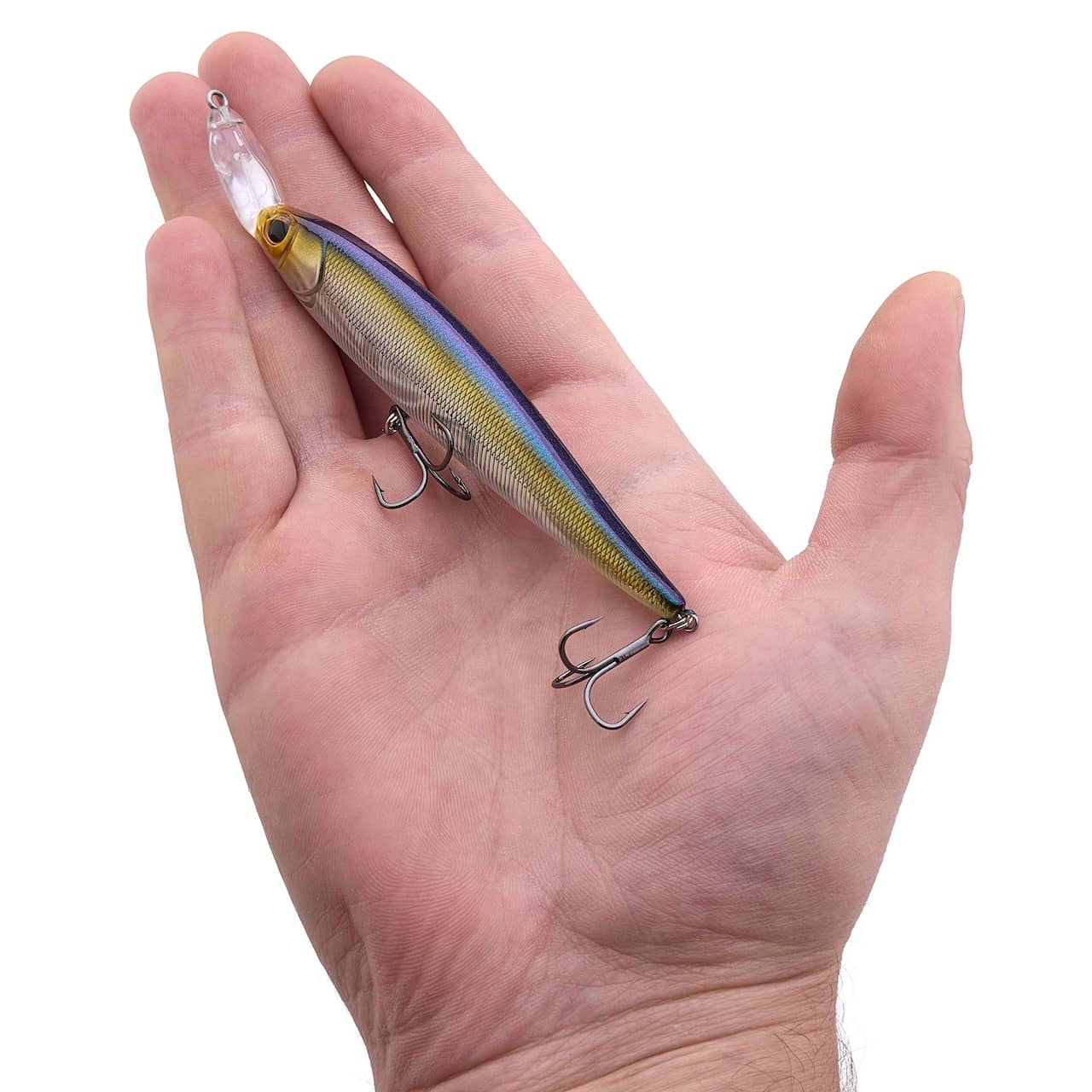
The Berkley Krej is weighted towards the tail so it sinks backwards and has an upside-down lip so it darts up when pulled forward, allowing anglers to jerk it back and forth right in front of a stationary fish. Berkley photo.
Do I Need Real-Time Imaging?
The question that remains on the mind of anglers from coast to coast: do I need real-time imaging? The answer will vary by fishery and by fisherman. Where these systems really shine is in situations where it’s possible to move slowly (remember, there’s a trolling motor and/or transducer mounting pole deployed whenever they’re in use) or hover in place and target specific fish in a specific hotspot. Since you can see whether fish are there or not and watch how they react to lures, anglers can focus on the specific fish they’re watching and change lure type and color or retrieve rate, cadence, and depth, until triggering the fish to strike. These systems aren’t meant for covering lots of ground nor are most meant for fishing open water, though as we’ve just learned some of the newer system enhancements are taking a stab at it; time will tell how useful they prove to be.
What this all boils down to is that real-time imaging is ideal for fishing for species like largemouth bass, which tend to orient to structure and stay there. And it just so happens that largemouth bass are the number-one most popular freshwater sportfish in America. So to date, the vast majority of the real-time imaging units sold have been in the freshwater fishing market and especially for use on dedicated bass boats.
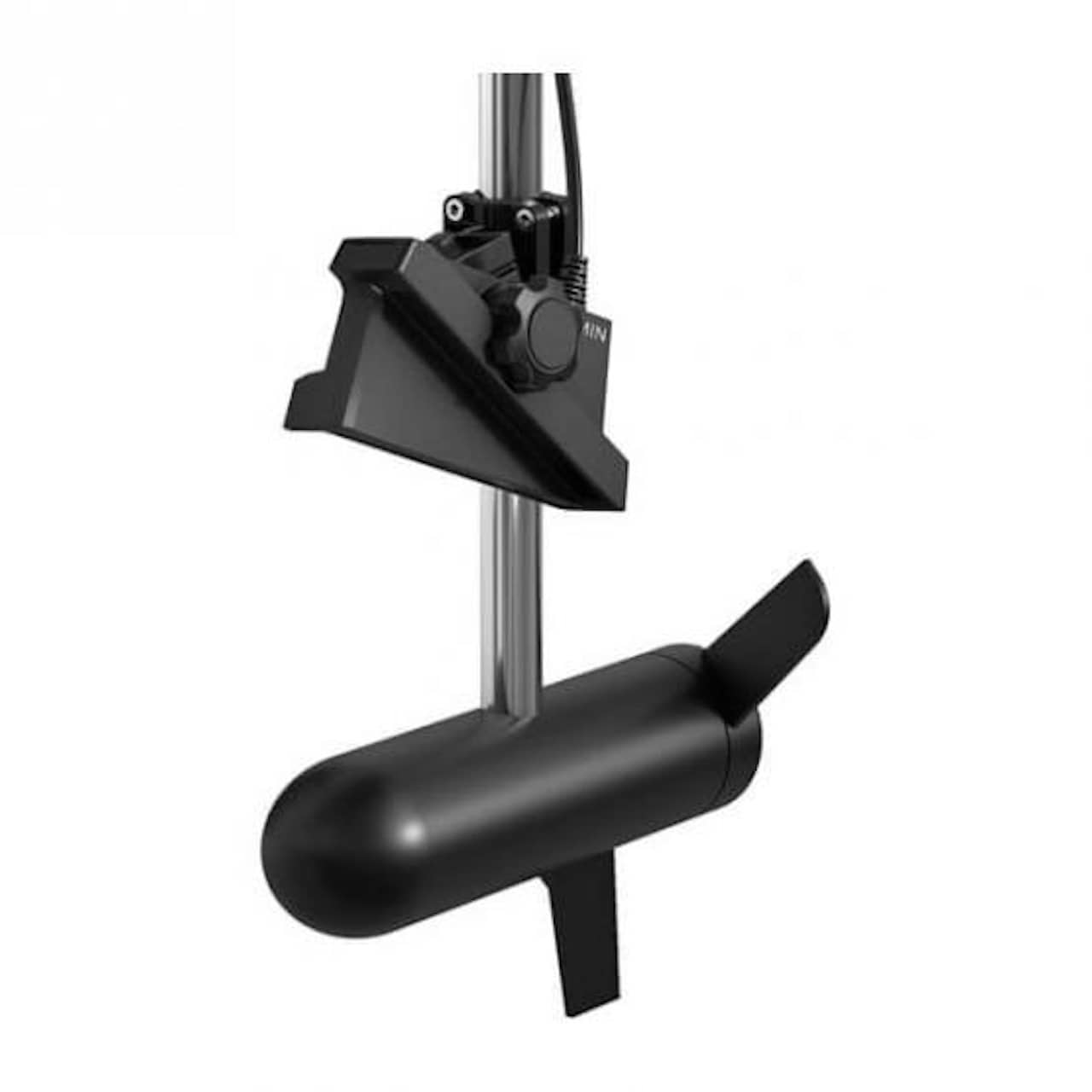
Transducers commonly get mounted to a trolling motor shaft. Garmin photo.
The Best Real-Time Imaging System to Buy
If you’ve decided that real-time imaging is for you, next you’ll have to settle on a system. And in many cases, the electronics manufacturers will have already made the decision for you since each of their systems has been designed to work with their proprietary software and MFDs. Remember, they can’t be mixed and matched. If you already have Garmin at the helm, only Garmin’s real-time imaging can be integrated, if you already have a Humminbird installed only Humminbird real-time imaging can be added, and so on.
It’s always an option to completely change out your electronics system, of course, but that can drive costs from a couple thousand dollars to many thousands of dollars. And as any one manufacturer makes an incremental improvement, the others tend to be exceptionally fast to catch on. Often it’s just a season or two before competitors make an upgrade, and Brand X no longer has much of an advantage over Brand Y. So generally speaking, most anglers will opt to go with the brand of real-time imager that pairs up with the preexisting system on their fishing boats.
